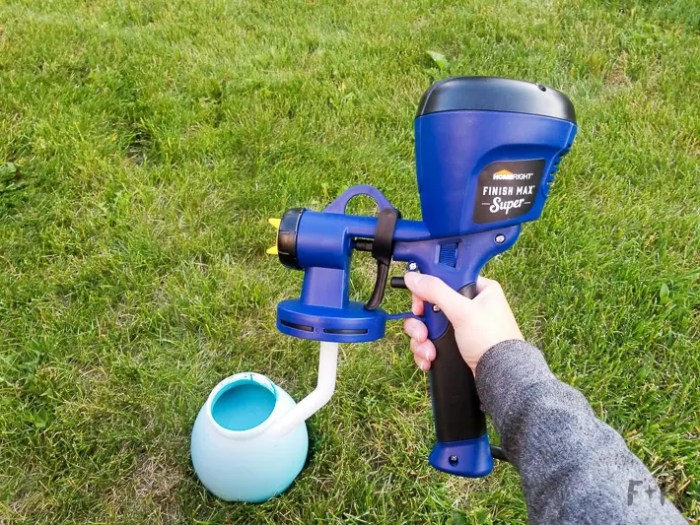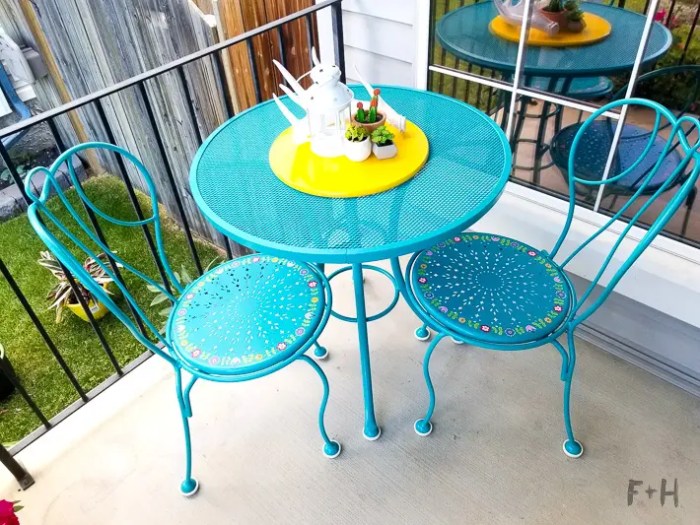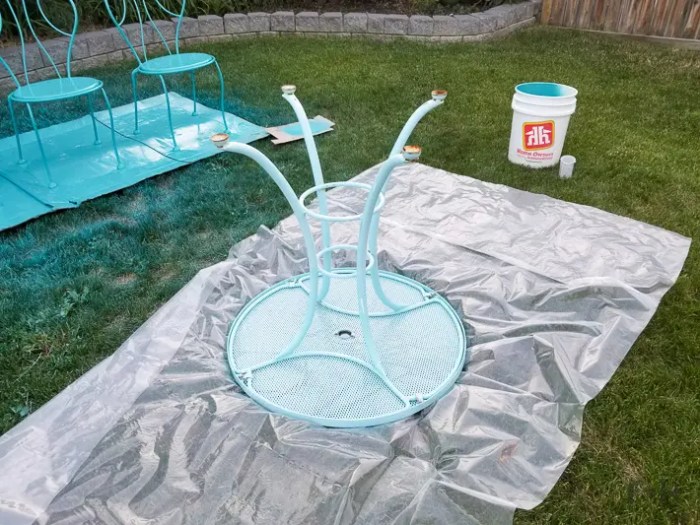Repainting patio furniture is an art form that combines creativity, precision, and a touch of elbow grease. Whether you’re looking to restore faded pieces or give your outdoor space a fresh new look, this guide will provide you with all the tips and techniques you need to achieve stunning results.
From choosing the right paint to applying it flawlessly, we’ll cover every step of the process to ensure your patio furniture looks its best for seasons to come.
Patio Furniture Repainting Overview
Patio furniture repainting involves restoring the appearance and extending the lifespan of outdoor furniture by applying a fresh coat of paint. It’s a cost-effective way to revitalize worn-out or faded pieces, enhancing their aesthetics and functionality.
Benefits of Repainting Patio Furniture
- Protection from Elements:Paint acts as a protective barrier against sun, rain, and other weather conditions, preventing damage and prolonging the furniture’s life.
- Aesthetic Enhancement:Repainting allows for a complete makeover, transforming the look of your patio and creating a cohesive outdoor space.
- Cost Savings:Compared to replacing furniture, repainting is a more affordable option, allowing you to save money while maintaining the beauty of your outdoor living area.
- Increased Durability:A fresh coat of paint strengthens the furniture’s structure, making it more resistant to wear and tear.
Suitable Patio Furniture Materials for Repainting
Not all patio furniture materials are suitable for repainting. Here are some commonly used materials and their suitability:
- Wood:Wood is an excellent choice for repainting as it can easily absorb and hold paint. It’s important to use a paint specifically designed for outdoor wood surfaces.
- Metal:Metal furniture can be repainted, but it requires proper preparation to ensure adhesion. Use a rust-resistant primer and a paint formulated for metal surfaces.
- Wicker:Wicker is a natural material that can be repainted with caution. Choose a paint specifically designed for wicker and follow the manufacturer’s instructions carefully.
- Plastic:Plastic furniture can be difficult to repaint due to its non-porous surface. If repainting plastic, use a primer and paint specifically designed for plastic surfaces.
Patio Furniture Preparation: Repainting Patio Furniture
Before repainting your patio furniture, it’s essential to prepare it properly to ensure a smooth and durable finish. This involves cleaning, sanding, and repairing any damaged areas.Cleaning your patio furniture thoroughly removes dirt, mildew, and other contaminants that can interfere with the paint’s adhesion.
Use a mild detergent and a soft brush or cloth to gently scrub the furniture. Rinse it thoroughly with clean water and allow it to dry completely.Sanding the furniture creates a smooth surface for the paint to adhere to. Use a fine-grit sandpaper and sand in the direction of the wood grain.
Remove any sanding dust with a damp cloth.Inspect your patio furniture for any damaged areas, such as cracks, splits, or loose joints. Repair these areas before repainting to prevent further damage and ensure the furniture’s longevity.
Paint Selection and Application
Choosing the right paint and applying it correctly are crucial for a successful patio furniture repainting project. Various types of paints are suitable for outdoor furniture, each with its advantages and disadvantages.
Types of Paint
- Oil-based paint:Durable, long-lasting, and resistant to moisture, but requires longer drying time and emits strong fumes.
- Water-based paint:Dries quickly, easy to clean up, and less toxic, but may require multiple coats for good coverage.
- Acrylic paint:Versatile, water-based, and available in various colors and finishes, but may fade over time.
- Rust-oleum paint:Specifically designed to prevent rust, suitable for metal patio furniture.
Color and Finish, Repainting patio furniture
When selecting a color, consider the style of your outdoor space and the existing décor. Choose a finish that complements the material and intended use of the furniture. For example, a matte finish can hide imperfections, while a glossy finish can enhance durability.
Application Techniques
- Prepare the surface:Clean and sand the furniture to remove dirt and debris.
- Apply primer:If necessary, apply a primer to improve paint adhesion and prevent rust.
- Use a brush or roller:Apply paint in thin, even coats, using a brush for intricate areas and a roller for larger surfaces.
- Allow to dry:Follow the manufacturer’s instructions for drying time between coats.
- Seal the finish:Apply a clear sealant to protect the paint from the elements and extend its lifespan.
Finishing Touches and Maintenance
The final step in repainting patio furniture is applying a protective sealant or topcoat. This layer serves as a shield against the elements, preventing moisture, UV rays, and dirt from damaging the paint finish. By maintaining your repainted furniture, you can extend its lifespan and keep it looking its best for years to come.
Types of Sealants
Various types of sealants are available, each offering unique benefits:
- Polyurethane Sealants:Durable and resistant to wear and tear, ideal for high-traffic areas.
- Acrylic Sealants:Water-based and easy to apply, providing good protection against moisture.
- Oil-Based Sealants:Penetrate deeply into the wood, offering excellent protection against moisture and UV rays.
- Epoxy Sealants:Two-part sealants that create a hard, glossy finish, ideal for surfaces that require extra durability.
Final Summary
With careful preparation, the right materials, and a little bit of patience, you can transform your patio furniture into a vibrant and inviting centerpiece of your outdoor living space. So grab your brushes and let’s get started on creating a backyard oasis that you’ll love for years to come.





